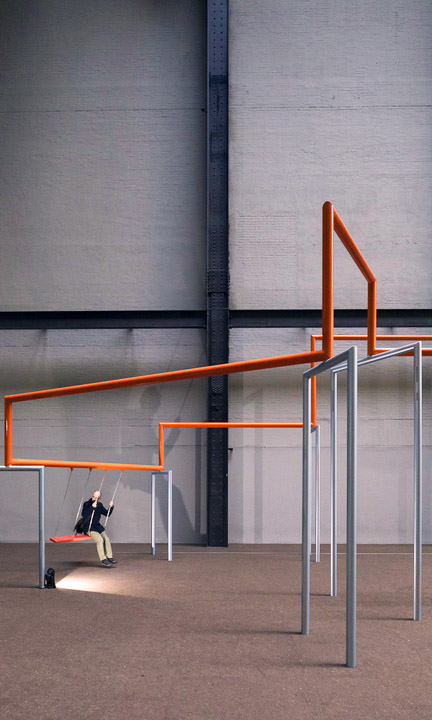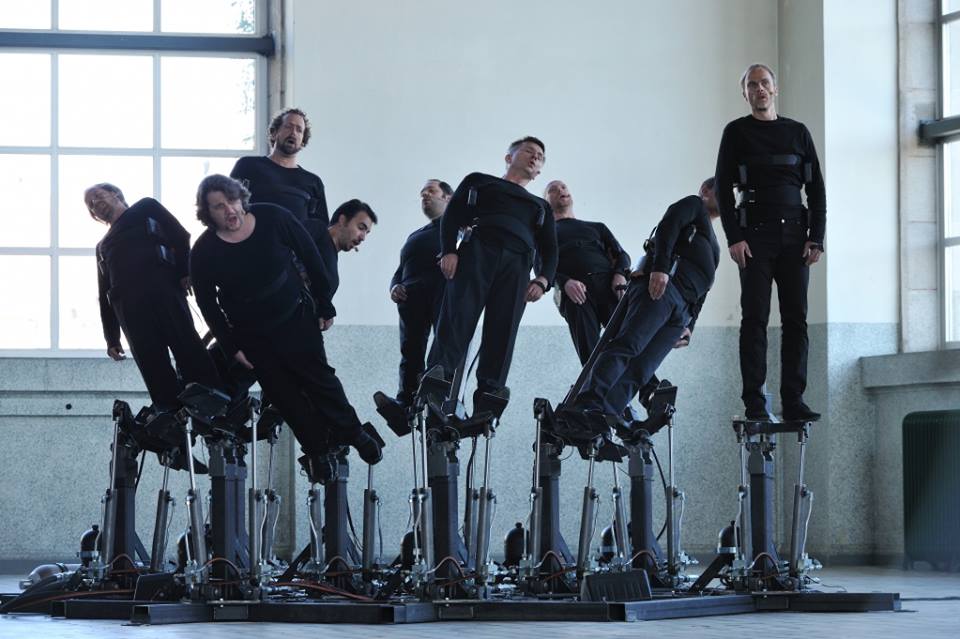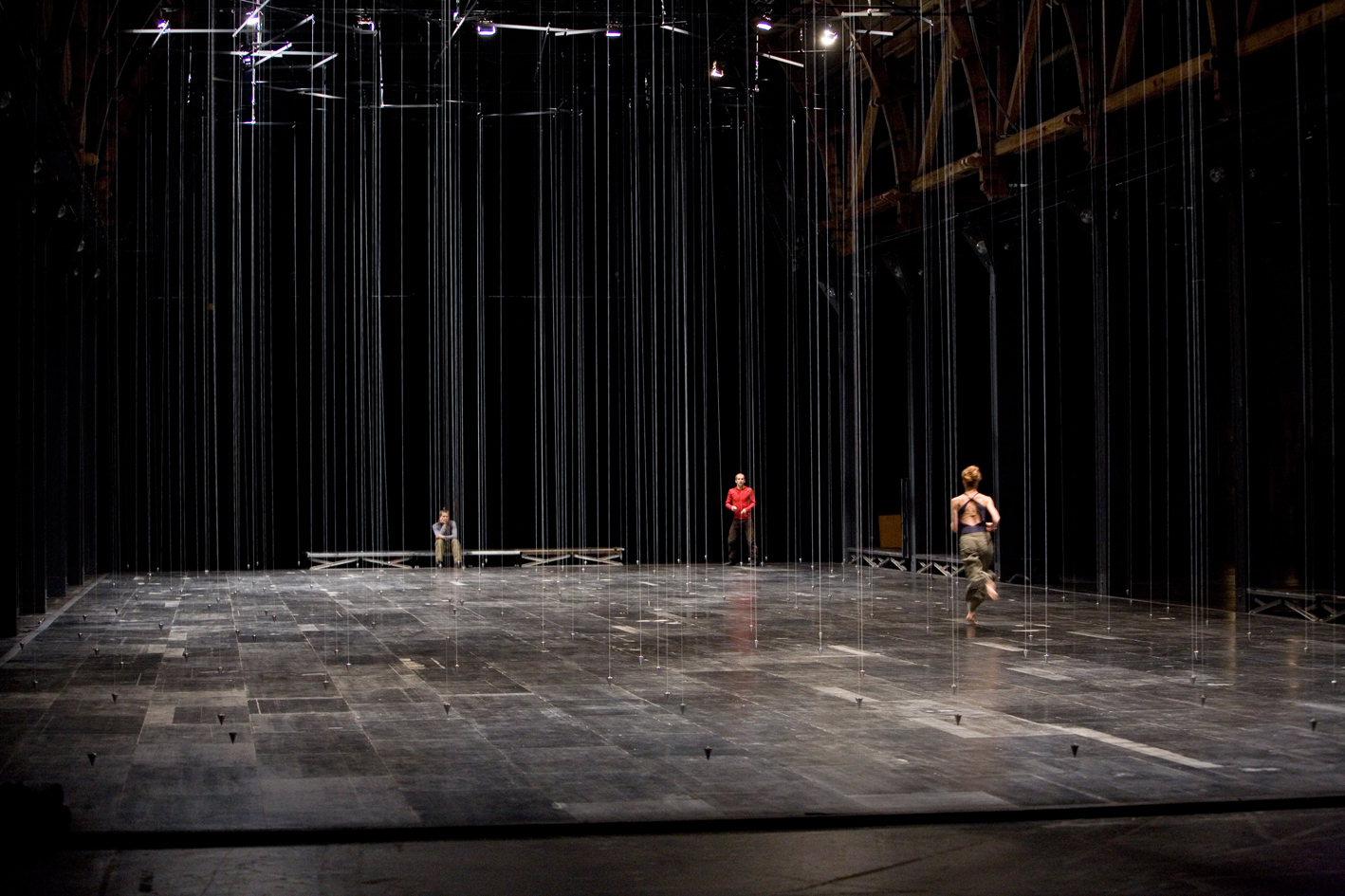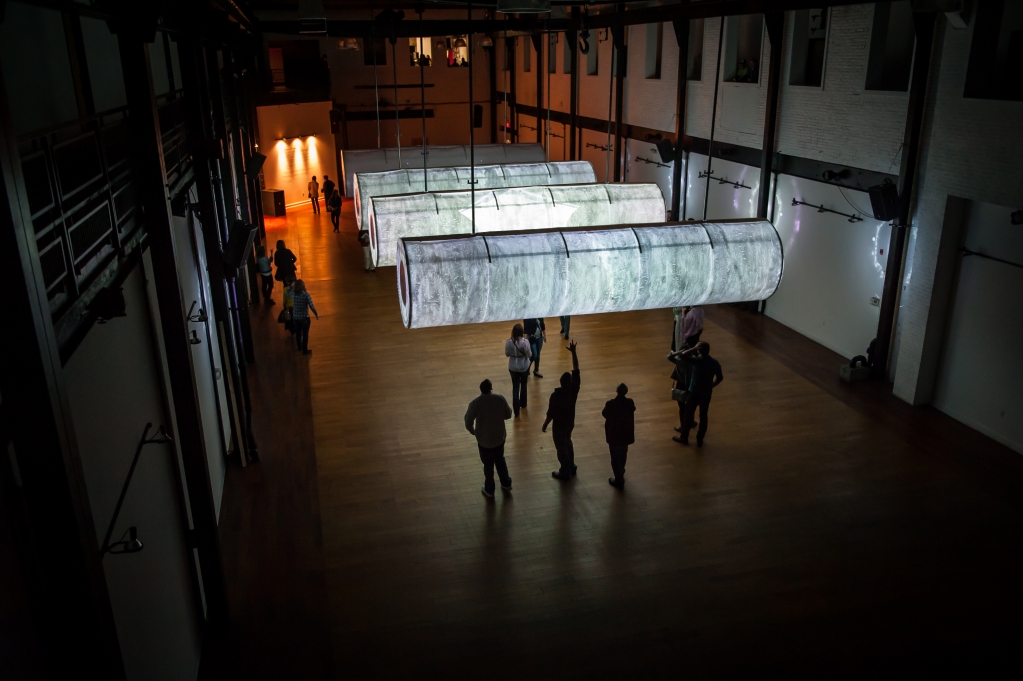
Stefan Tiefengraber
TH-42PH10EK x 5
Five screens were installed by the artist as pendulums that swing continuously. As soon as all five have come to a standstill, they are pulled back into their original positions with the help of cable winches and are made to swing again – triggered by pulling a rip cord, a performative act that cannot take place without human intervention and which involves the exhibition supervisor in the installation. Each cycle, which lasts approximately 45 minutes, ends as soon as all five screens have come to a standstill and no more sound is produced by their movement. The sound is produced by the amplification of the friction to which the joints of the moving pendulum are subjected. Multiplication thus creates five oscillating loops that merge into one another with a time offset.




